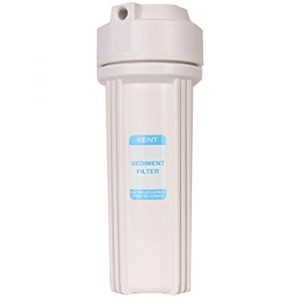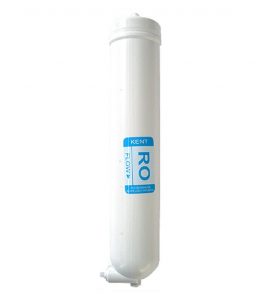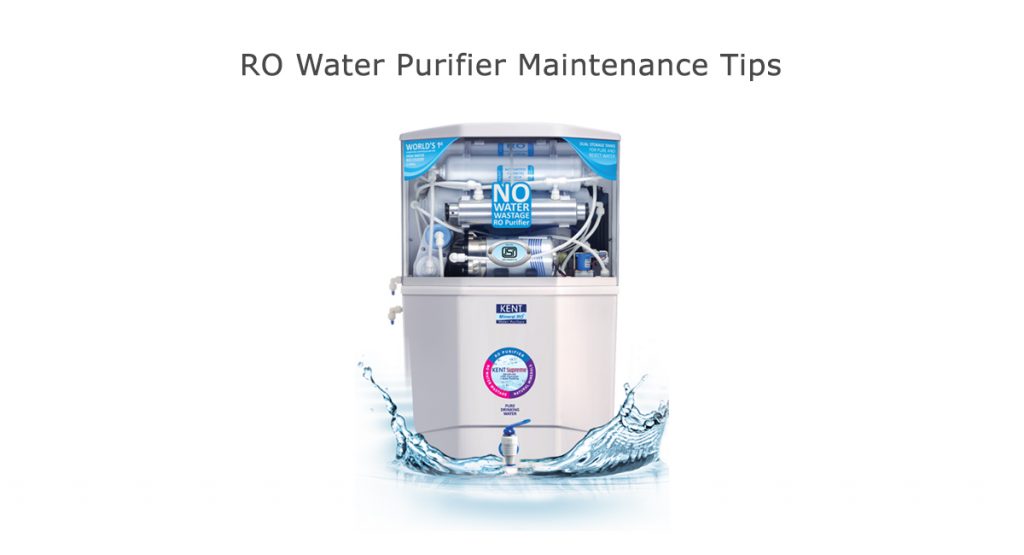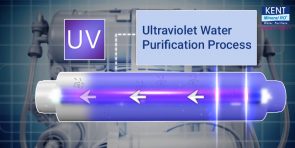Maintaining Your RO Water Purifier
The reverse osmosis (RO) system uses a multi-stage filtration process to remove different types of contaminants from water. The water purification system uses a thin membrane to remove salt, chemicals, and impurities from water to make it safe for consumption. The contaminated water passes through this thin membrane (a polymer film) with very small-sized pores. The membrane weeds out minerals and microorganisms present in water. An outlet pipe flushes out the impurities. However, to ensure that you get clean and safe drinking water, you need to properly maintain the water purifier. Without proper maintenance and care, the water purifier will not function properly and you may end up drinking contaminated water. So, in this blog, we discuss a few tips that will help you maintain the RO water purifier. Read on.

How to Maintain RO Purifiers and their Importance
RO water purifiers play an essential role in removing different types of impurities from water. The additional filtration stages remove impurities of various sizes to make water safe for use. This is the reason why maintaining RO filters is a must so that the water purifier works without any glitches. A reverse osmosis system consists of three stages-pre-filter, reverse osmosis, and post-filtration. The pre-filtration stage separates sand, silt, and other residual particles from water. The pre-filtration stage is important to keep the RO Membrane safe from damage. Not changing the pre-filters might damage the RO membrane and the water purification process may also be affected.
1. Maintaining the RO Membrane
In the reverse osmosis stage, water is pushed at a pressure of 35 psi in order to pass through the membrane. The thin RO membrane separates out the solutes from the solvent and only pure solvent is allowed to pass through it. As the RO membrane is a central part of the water purifier system, maintenance, and regular cleaning is of utmost importance to ensure that you get clean, safe, and tasty drinking water. The RO membrane needs to be changed every 3-4 months in order to prevent clogging pores.
2. Regular Filter Changes
The filter of an RO purifier needs replacement after approximately 3 months. The reason is the contaminants from water clog the filters after a short span of time. Not cleaning the water purifier frequently will affect its filtration capacity and the quality of the water. If you continue using filters without changing them, the impurities are transferred to the water you drink. As RO water purifiers have at least three to twelve stages of purification, it is important to schedule the filter change on a regular basis.
3. Sediment Filter

RO water purifiers use multiple filters to remove impurities present in water. One of the filters used by the RO purifier is the sediment filter. Change your sediment filter at least once a year. Maintaining your sediment filter helps in staining out sediment, dirt, and slit. It protects dirt from getting to the fine RO membranes.
4. Carbon Filter
You also need to change the carbon filter once a year. A carbon filter removes chlorine and other dangerous contaminants that affect the life and performance of the RO membrane. The filter also has an impact on the taste and odor of the water you drink. (Source: Home Design With Style)
5. RO Membrane Replacement

RO purifiers come with a semi-permeable membrane, which allows water to pass through it but filters out all additional contaminants. For optimal performance, you need to replace the RO membrane every two-three months. However, keep in mind that this schedule is totally based on the quality of water and household water usage.
6. Drips And Leakages
In case you notice drips or leakages, don’t forget to get the help of a professional. Leakages in a water purifier can create a lot of problems if you don’t take the right steps. Ask the professional to thoroughly check the water purifier to know the cause of the leakage and save the machine from damage.
7. Sanitize Your RO Tank
You also need to clean the pipes of the RO system regularly to make sure the water purifier works perfectly. Sanitizing the RO tank can help you maintain the purifier and keep it in a good condition. For best results, sanitize the RO tank when you replace the filters.
8. Annual Maintenance
To avoid any serious problems with the RO purifier, make sure that you get the help of a professional to replace the filters. Renowned brands such as KENT provide annual maintenance contracts (AMC) which is an easy and convenient way to maintain the appliance.
Summarizing the Process
- Replace all the filters annually or at the max of 12 months
- Replace the RO membranes annually
- Sanitize the water storage tanks
- Make sure to clean and sanitize the pipes every 2 years
- Replace and buy any new parts when necessary
- Check the pressure nozzle at regular intervals
Conclusion
The best water purifier for a home will provide optimal performance only when you follow the maintenance tips. Taking an active role in the maintenance of your RO filter will make sure that the system will always deliver the best performance and that its service life will be prolonged. KENT is known for providing top-quality after-sales services for the convenience of customers. You can easily get in touch with them via phone, chat, email, or mobile app. To find out more about our after-sales services, click here.






Thank you for your valuable feedback. This means a lot to us.
Please change the Sediment Filter duration of replacement because I am getting it changed after 6 months.Service person is saying that replacement of sediment filters depend on quality of water at different places so please consider it before posing any information on the website.
Regards
Siddharth Rathore
Please inform me how to clean the water tank, which is getting yellowish after 10 to 15 days of continuous usage. how to clean that plastic water container.
Dear Customer,
We regret that you are facing issues. Please provide registered contact details at onlinecare@kent.co.in so that our team may resolve it at the earliest. Alternatively, you can contact us at +91-9278912345.
Regards,
Team Kent
Hi Deepika,
What is the product warranty of your RO filter???
I had changed the complete filter set on June 2021 and again by October water stopped coming from the filter.
When i registered a complaint the engineer says the filter needs to be replaced.
Please tell your Management that at least the product quality should be such that it withstands at least for 1 year.
Had used it in Ahmedabad also but there was no problem there ( as water is saltier than from Bangalore).
Had paid 3300 for changing the unit.
Really it’s disappointing
Dear Customer,
we are sorry for your disappointment. This is something we’d never want you to feel about us. Please share your contact details at onlinecare@kent.co.in so that we can contact you soon. Alternatively, you may also call us at +91-9278912345.Regards, Team Kent
Regards,
Team Kent
Dear Sir,
Its been quiet a while the RO filter water tank is nt filling.
I amnot sure what the issue, request your help to resolve the same at the earliest.
Thanks
Dear Customer,
We deeply regret the inconvenience caused. Customer satisfaction has always been our priority and we are promising you that we will resolve this as quickly as possible. Please share your contact details at onlinecare@kent.co.in or call us at +91-9278912345.
Regards,
Team Kent
Dear Sir,
Thanks for writing to us. Please share your contact details at onlinecare@kent.co.in We’ll connect with you soon.
Regards,
Team Kent
do i have to switch of the purifier after the switch turns red in color?
Dear Customer,
Thanks for writing to us. regarding your query, we would inform you that it has automatic operation that automatically shuts off when the storage tanks are full. You may switch off the purifier when not is use. You may also call us at KENT Helpline Number +91-9278912345. Alternatively, you may share your registered contact details at onlinecare@kent.co.in so that we may assist you.
Regards,
Team Kent
kent motor head having continuous leakage , earlier head some noises and now with minimum water output head of pump having continuous leakage of water. Whether head cartridge had damaged or something else, service was done eleven month back.
Dear Customer,
we are sorry for your disappointment. This is something we’d never want you to feel about us. Please share your contact details at onlinecare@kent.co.in so that we can quickly resolve it. Alternatively, you may also call us at +91-9278912345.
Regards,
Team Kent
sir i am using Kent super plus water filter since 2014.initially i am getting proper service from your service provider but later on i found your service provider has lost loyalty of customer due to one or other reason as a result i have to purchase all Kent filter candle including ro membrane on line and replace it every 12 month .please do something to frame a clear policy for AMC without replacement of parts and service charges so that no customer be unnecessary asked to pay extra on account of replacement of parts even if it is not required
Dear Customer,
We are sorry for the unpleasant experience you had. Please allow us to make it upto you as we believe in complete customer satisfaction. You can share your details at onlinecare@kent.co.in. Alternatively, you can contact us at +91-9278912345.
Regards,
Team Kent
I bought Kent Grand Plus New Mineral RO in Feb’20. During installation I had requested to install a pre-filter and technician installed Kent Sediment Filter (at additional cost) prior to prevent entry of sediments into the machine. The draw back is that I could not get the cartridge for the sediment filter elsewhere except from your Authorized Service Partner. Request you to market the cartridge through e-commerce partners as well so that the product is easily available for purchase.
Dear Customer,
we are sorry for your disappointment. Please share your contact details at onlinecare@kent.co.in so that we can quickly resolve it. Alternatively, you may also call us at +91-9278912345.
Regards,
Team Kent
I am using Kent Grand plus from past two years, for the first year it worked very well and in the second year started various issues , raised complaint with kent app, the engineer attended and said to change filters , i agreed to change but he charged about 4800/- which is unexpected, i asked what is the reason for too much cost, he simply replied that its your wish whether to change or not but every year the maintainance cost will be same. Paying nearly 5000 rs per year, then what is the use of this kent RO, charges are very high it would be better if the prices may be revised,
Dear Customer,
We are sorry for the unpleasant experience you had. Please allow us to make it upto you as we believe in complete customer satisfaction. You can share your details at onlinecare@kent.co.in. Alternatively, you can contact us at +91-9278912345.
Regards,
Team Kent
This is the same issue with us. Kent does not address the issue of service personnel ripping off customers. I have used Kent for ten years. The service personnel uses local imitation products with Kent label. Customers can never distinguish original Kent versus Kent official parts. I lost Rs 4800/ to replace all filters. and still the issue has not been solved. It is not worth spending that kind of money each year to replace filters. The product is good, but service charges and service are both bad rip off. Authorized Service Dealers should be allowed to carry local products. But Kent does not care over the years. I will file a police complaint in Bangalore next.
Sorry it should read the “ASD should NOT be allowed to carry local imitation parts”.
Hi S Rajendran, we sincerely regret the inconvenience faced by you. Please share your details at onlinecare@kent, so that we can quickly resolve it. Alternatively, you may also call us at +91-9278912345. Regards, Team Kent
Hi,Hope at least one of the above 4 email IDs will have the courtesy to respond!!
The below experience has made me realise it will be good if I can learn to service/maintain my Kent Excell+ RO unit on my own. Will be great if you can post self-help videos on YouTube.Else, from my side, it will be goodbye Kent or anyone else and Hello Bisleri!
Just yesterday, I got my Kent Excell+ service done as it started beeping. Service was done by Aishwarya Solar Technologies in Bangalore. I bought the unit from them 3-4 years ago and have also been getting it serviced regularly from them. Their services are really over priced and I felt cheated especially this time. So much for being a loyal customer of Kent and AST.
1. Got one Purerite PS-05 KEMFLO replaced.
I was initially quoted Rs.300/= by the technician. But when I called their office (see below number) I was told it is RS. 200/=. On Amazon, the same is available as a Pack of 3 units for Rs. 260/= (Rs. 86 per piece!) ALMOST 300% MARKUP!!
2. I was told the choke (SP Electronic Ballast Auto Flush) reset button was damaged and the whole unit has to be replaced.The technician said he had a new one. When asked for it, he gave me a box (see photo enclosed), and in it was an older looking unit and after I examined it, it was a 2017 manufactured one (may be replaced/broken one from another customer). When I asked him if he had another piece, he gave a newer one saying it did not have an original pack. After checking it, I felt it was the new one replaced in the pictured box with the used/old piece! I said he can replace my broken one with this specific piece, which he did eventually.When I asked for the price I was quoted Rs. 935/= and I had no choice but to say yes as I wanted the unit to start working.When I checked the MRP on the box, it is over-marked with a black marker so that you could not read the price(picture attached)!
3. The technician also tried to sell me a no-brand AntiScalent balls. Pack of 10 for Rs. 700/=! (picture enclosed). I am glad I did not buy it.
4. By the time this whole ordeal got over, the technician was quite pissed at me I think and he did a poor job of refitting the unit as there were screws/washers on the floor and the unit itself has improper fitted screws. (not sure what he has done inside). Please note at no point did I personally accuse or above the technician.4. Last but not the least was my experience talking on the phone with AST person. I wanted to express my concerns on the above horrific experience; the person claimed she is only a receptionist. Her only response was she was new to the job and didn’t know much; and said she will pass my number to her manager to call me back. It has been close to 24 hours and I am still waiting for the call. The number I called was 99000 70690. It was from this number that I got called saying they will send the technician. Interestingly, this company has listed 3 other mobile numbers and one landline number and when I called one of them, no one answered nor did they return the call!
Dear Customer,
We are sorry for the unpleasant experience you had. Please allow us to make it upto you as we believe in complete customer satisfaction. You can share your contact details t onlinecare@kent.co.in so that we may assist you soon. Alternatively, you can contact us at +91-9278912345.Regards, Team Kent
Why the water in my KENT PEARL is flowing very slowly (drop by drop) to the tank whereas the wastewater flows very smoothly. Which filter is to be replaced?
Dear Customer,
We sincerely regret the inconvenience you have faced. Please call our helpline number +91-9278912345. Alternatively, you may also provide your contact details at onlinecare@kent.co.in .We’ll surely assist you.
Regards,
Team Kent
worst company, kent customer service doing fraud with the customer, they always say that RO is not working or motor is not working , kent just trying to earn money from customer by doing fake replacement of filter parts. i replace all filter 2moths back at 4k in which kent said that filter have 6 month warranty and RO have 12 month warranty, within 3 month service person said that RO is not working which cost 2500 and after that said motor is not working which cost2800, when i have warranty of 12 mnth then why i have to pau money, they are just fraud
Dear Customer,
We are sorry for the unpleasant experience you had. Please allow us to make it upto you as we believe in complete customer satisfaction. Please share your contact details at onlinecare@kent.co.in. Alternatively, you can contact us at +91-9278912345.Regards, Team Kent
Regards,
Team Kent
Marvelous, what a web site it is! This webpage provides useful
facts to us, keep it up.
I’m not that much of a online reader to be honest but
your sites really nice, keep it up! I’ll go ahead and bookmark
your website to come back down the road. All the best
Hi,
Your appreciation means a lot to us. Wishing you a great day ahead.
Regards,
Kent Team
Hello. And Bye.
Hi,
Greetings from KENT RO Systems. Please let us know if there is anything we can help you with. Regards, Team Kent
Regards,
Team Kent
I am having kent Pearl water purifier.
Drop-drop water is coming from drain pipe. However, we are getting good flow pf purified water in the tank. What can be the issue?
Dear Customer,
We regret that you are facing issues. Please provide your contact details at onlinecare@kent.co.in so that we may resolve it at the earliest. Alternatively, you may also call us at +91-9278912345.
Regards,
Team Kent
I bought a Kent superb star and installed on 28- 10-2020
Its been almost 8 months. My question is when do i get the machine serviced is it every 6 months or yearly?
Also what to do the meter on the RO showing Low minerals
Dear Customer,
We regret that you are facing issues. Please call our helpline number +91-9278912345. Alternatively, you may provide your contact details at onlinecare@kent.co.in so that we will resolve your issue at the earliest.
Regards,
Team Kent
I purchased Kent Grand and was quite satisfied with the machine as well as service provided by the kent team. Earlier the visiting engineers were very transparent and used to show us the sealed package and the changed machine parts use to give long time service even the filters.
I somehow have lost that trust as kent parts replaced by visiting engineers have lesser life. I feel they are not using authentic parts or the quality of the parts is not as before.
i purchased KENT as its a renowned name and providing good after sales service.
Service Team of Kent must look into this matter.
26.07.21
Dear Customer,
we are sorry for the unpleasant experience you had. Please allow us to make it upto you as we believe in complete customer satisfaction. Please share your details at onlinecare@kent.co.in so that we can quickly resolve it. Alternatively, you may also call us at +91-9278912345.
Regards,
Team Kent
I purchased Kent Grand Plus . Now i am feeling that there is no use for paying more amount on Kent Brand products as their parts also same as other local brands. As my friend purchased other brand at the same time with Rs.8000 and same time we are changing filters. so try to avoid brand and encourage other competitive products.
Dear Customer,
We are sorry for the unpleasant experience you had. Please allow us to make it upto you as we believe in complete customer satisfaction. Please share your contact details at onlinecare@kent.co.in. Alternatively, you can contact us at +91-9278912345.
Regards,
Team Kent
Dear Sir,
Water is not coming after replacement of filter from Kent authorized service center. The booster pump is delivering very low water with some unusual sound (THUK THUK). Kindly suggest the remedial action.
Dear Customer,
We sincerely regret the inconvenience faced by you. Please share your details at onlinecare@kent.co.in so that we can quickly resolve it. Alternatively, you may also call us at +91-9278912345.
Regards,
Team Kent
Used the purifier for 3 months and then did not use it for more than an year now. Do I need to make a service request or can use it normally?
Dear Customer,
Thank you for writing to us. Regarding technician’s visit at your premise, please call our helpline number at +91-9278912345. Alternatively, you may also provide your contact details at onlinecare@kent.co.in so that we will contact you.
Regards,
Team Kent
WE have kent RO water filter. UV filter is leaking from one side. what is the cost of it. I need all filters should be changed with pipes also as filter is taking two hrs for filling complete tank. What is regular expected time to fill the tank ?. let me know the total cost I have to pay if all filters need to be changed.
Hi Deepak Nakashe, we are a 100% customer oriented company and it is our continuous endeavor to serve you better. We are promising you that we will get your issue fixed at the earliest. Provide your contact details at onlinecare@kent.co.in or you can also call us at +91-9278912345. Regards, Team Kent
I’ve been using this product from sometime now “KENT Gold Gravity Water Purifier (11014) | UF Technology Based | Non-Electric & Chemical Free | Counter Top | 20L Storage”. The old one started tasting bad so I though it had gotten old and need to be replaced, so I did changed the filter and whatever it needed but the taste of the water was same so Ordered a new one same model and now again the water tastes the same and I tried tasting tap water and it tasted alright but using this purifier it tastes bad.. what can I do?
Hi Gurpreet Chawla, we deeply regret the inconvenience caused. Customer satisfaction has always been our priority and we are promising you that we will resolve this as quickly as possible. Please send your details to onlinecare@kent.co.in or call us at +91-9278912345 Regards, Team Kent
I have been using Kent Super star RO , yesterday i heard a long continuous infinite beep sound.
I logged service call with Kent. Service engineer came today and immediately said “all filters to replaced”.
membrane – 2700
FRT-285
IIC-550
IIS-550
UF-650
Poct- 450
Service Charge-300
Total- 5485
He asked if i have AMC , i said no then told your RO motor will stop working within a year (will cost around 3000 , covered under AMC), so suggesting to take AMC (cost 2950) and said your service charge will be waived in case i take AMC.
I said anything else to be replaced , he said “No, that’s all the items which can be replaced” 🙂
He said don’t use “Kent candle for out filter” , it is not recommended and impacts the other RO parts.
Out filter candle is the worst part Kent made for ROs.
Also, he took all the used filter and even the used out filter candle with him.He started cleaning it not sure why in our sink. Not sure if it is a normal process for them to take the old/out filters.
I am not sure if we should use Kent Out filter candle or local. The service man used local in my case.
Please suggest.
Hi, thank you for writing us. Regarding your query you can reach us at +91-9278912345 / onlinecare@kent.co.in. Regards, Team Kent
I have done a mistake of installing Kent grand plus for very good municipal water with TDS level of 67 only, after flter TDS is 7 only. But service person says every year Rs 5500 to be spent for replacement of filters ,
How can the filter replacement frequency be the same for Good water and Bad water irrespective of consumption?
Hi, we sincerely regret the inconvenience faced by you. Please share your details at onlinecare@kent.co.in so that we can quickly resolve it. Alternatively, you may also call us at +91-9278912345. Regards, Team Kent